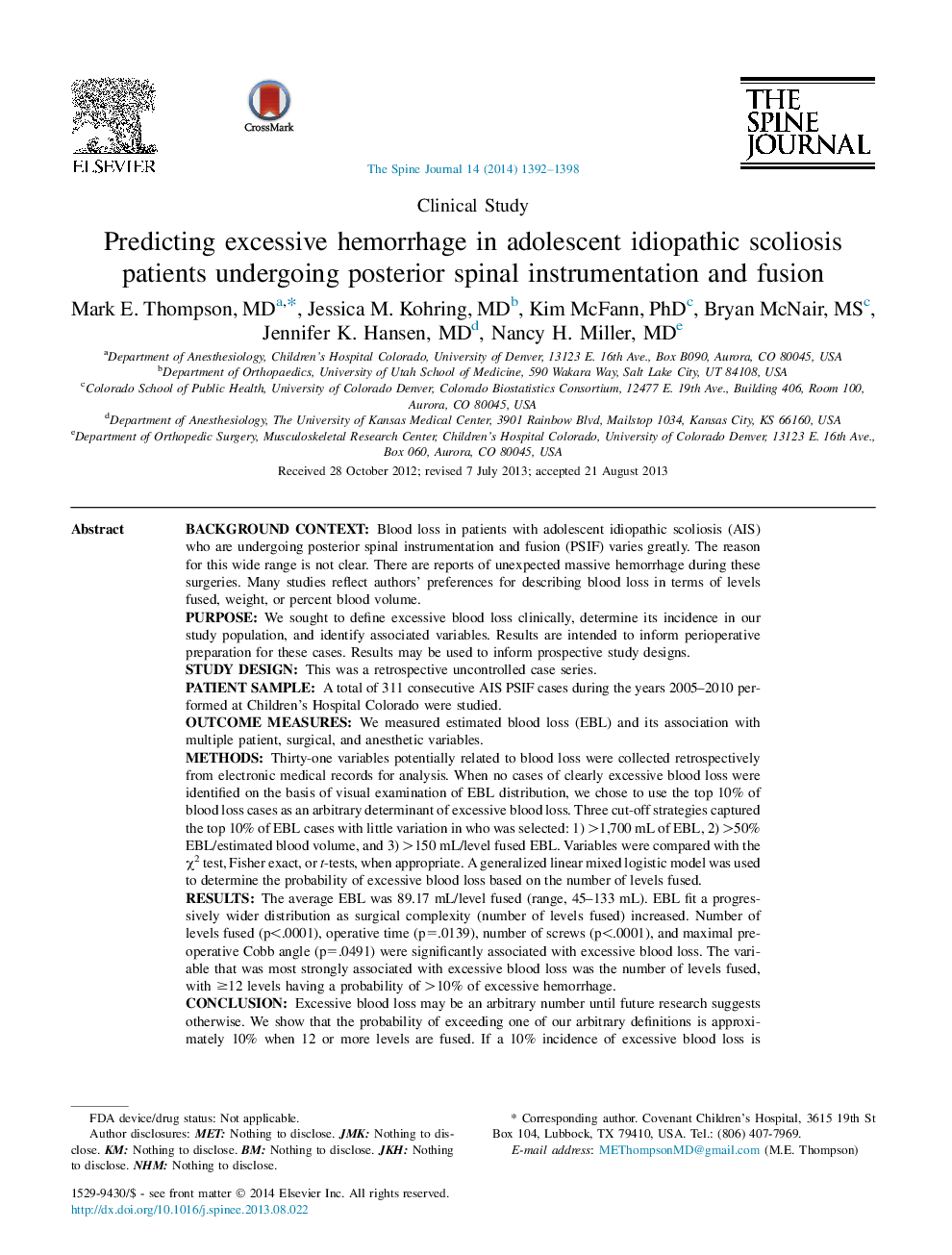| کد مقاله | کد نشریه | سال انتشار | مقاله انگلیسی | نسخه تمام متن |
|---|---|---|---|---|
| 6212172 | 1268575 | 2014 | 7 صفحه PDF | دانلود رایگان |
Background contextBlood loss in patients with adolescent idiopathic scoliosis (AIS) who are undergoing posterior spinal instrumentation and fusion (PSIF) varies greatly. The reason for this wide range is not clear. There are reports of unexpected massive hemorrhage during these surgeries. Many studies reflect authors' preferences for describing blood loss in terms of levels fused, weight, or percent blood volume.PurposeWe sought to define excessive blood loss clinically, determine its incidence in our study population, and identify associated variables. Results are intended to inform perioperative preparation for these cases. Results may be used to inform prospective study designs.Study designThis was a retrospective uncontrolled case series.Patient sampleA total of 311 consecutive AIS PSIF cases during the years 2005-2010 performed at Children's Hospital Colorado were studied.Outcome measuresWe measured estimated blood loss (EBL) and its association with multiple patient, surgical, and anesthetic variables.MethodsThirty-one variables potentially related to blood loss were collected retrospectively from electronic medical records for analysis. When no cases of clearly excessive blood loss were identified on the basis of visual examination of EBL distribution, we chose to use the top 10% of blood loss cases as an arbitrary determinant of excessive blood loss. Three cut-off strategies captured the top 10% of EBL cases with little variation in who was selected: 1) >1,700 mL of EBL, 2) >50% EBL/estimated blood volume, and 3) >150 mL/level fused EBL. Variables were compared with the Ï2 test, Fisher exact, or t-tests, when appropriate. A generalized linear mixed logistic model was used to determine the probability of excessive blood loss based on the number of levels fused.ResultsThe average EBL was 89.17 mL/level fused (range, 45-133 mL). EBL fit a progressively wider distribution as surgical complexity (number of levels fused) increased. Number of levels fused (p<.0001), operative time (p=.0139), number of screws (p<.0001), and maximal preoperative Cobb angle (p=.0491) were significantly associated with excessive blood loss. The variable that was most strongly associated with excessive blood loss was the number of levels fused, with â¥12 levels having a probability of >10% of excessive hemorrhage.ConclusionExcessive blood loss may be an arbitrary number until future research suggests otherwise. We show that the probability of exceeding one of our arbitrary definitions is approximately 10% when 12 or more levels are fused. If a 10% incidence of excessive blood loss is determined to be clinically relevant, teams might wish to pursue hematologic consultation and maximal blood conservation strategy when 12 or more levels are planned for fusion.
Journal: The Spine Journal - Volume 14, Issue 8, 1 August 2014, Pages 1392-1398
